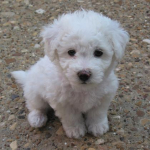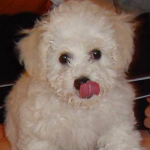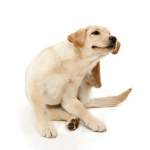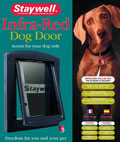
Hypoallergenic dog breeds. If you are looking for a hypoallergenic dog, you will have many breeds to choose from. From smaller dogs like the Maltese, to larger breeds such as the Greyhound, these dogs tend to shed less, and do not product as much saliva or urine. When researching dog breeds, you should keep in mind not only whether they are hypoallergenic, but also which living conditions they prefer, how they behave around children, and how much care and maintenance they will need. Certain breeds require constant companionship, while other breeds can be left along all day while you are at work.

Dog breed right fit for your family. Pets can be a wonderful addition to a family, as long as you find the right fit. Dogs come in many breeds, and all have their charms as well as their drawbacks. Finding out which dog breed is a right fit for your family and its lifestyle is very important. The wrong dog can create tension, destruction and eventually end up in a shelter, which are already overcrowded as it is.

Dog allergy treatments. Human beings are not the only species that can suffer from allergies. Dogs can also have allergic reactions to objects in the home, chemicals and pollutants in the air, dog food, and their own hair and dander. Finding the source of these allergies can be difficult especially if the dog is allergic to a few things. If you have a dog that suffers from allergies, you may notice that they sneeze when around harmful chemicals, vomit after eating, have skin rashes, patches of fur missing, runny nose and eyes, or they may show signs of fatigue or restlessness.

Hypoallergenic dogs are smaller, they will need even more love. All dogs need love in order to lead happy, healthy lives. Since most breeds of hypoallergenic dogs are smaller, they will need even more love. There are several ways that you can show your dog that you love them. Spending time together, exercising, giving them healthy, nutritious food, and treating the dog with respect are all ways to show your love. In return, you will have a loyal companion that will respect and protect you, your family, and your home.
br /
Daycare for dogs is a concept that is becoming more and more popular among the working population. Prior to the development of pet care, animals were left home all day, often penne up in cages, locked inside houses, or fenced in yards, left on their own to entertain themselves or cause trouble as they see fit. Many an owner has come home to a destroyed home, chewed up shoes or an escaped dog running free in the neighborhood. Dog daycare eliminates that problem by providing a safe place for animals to stay and play while their owners are away.br /
br /
While not enrolling your dog in daycare is not going to turn them into the undertrained laughingstock of the neighborhood, there are many advantages to doing so. In a doggie daycare dogs are provided with grooming services daily, including, but not limited to, bathing, brushing, nail trimming, coat clipping, and cleaning of eyes, ears and teeth. More in depth procedures, such as cleaning of anal glands, may be available at some centers. br /
br /
In a society where a disobedient dog may result in them having to be put to sleep, it is very important that all dogs be well trained. Dogs spend time each day with a professional trainer, who works consistently with them on basic obedience commands such as sitting and coming when called. A doggie boot camp is available in many locations for pets who have previously had difficulties in training. Many of these animals have been written off as untrainable. A highly educated staff works with the animals daily, using repetition to teach the dogs basic skill. A high level of success has been achieved through these programs, allowing the dogs to have more time and focus given to their training than is possible with an owner who works all day.br /
br /
Play time and exercise time are both important components of a canine day care facility. Dogs are walked several times a day, and like children are often given a playground to play on, allowing them to run, jump and climb. Separate faculties are available for both large and small size dogs, with the separation being made at or around twenty five pounds. Puppies have their own separate area, where they are played with, housebroken, and loved. br /
br /
As with a child care facility, guidelines are established for feeding and napping, with food bowls and sleeping space provided by the day care. Any nutritional or physical needs the dogs have are observed, with any problems discussed with both the owner and a veterinarian. In this way, all parties are involved in a dogs care, and the chances of a dog being cared for improperly are greatly reduced.br /
br /
Along with playground time, all dogs are given plenty of one-on-one playtime with staff. This time is essential for the dogs happiness, and illustrates the most important benefit of placing a dog in daycare. Dogs, like children, require love and attention throughout the day to be happy and well adjusted. Dogs that receive this love and attention are less likely to develop common misbehavior problems, and these happy dogs will make happy owners. br /
br /
br /
br /
[Sponsored] Bryan Seawell is the proud owner of this article and he owns a site called: bia href=http://www.productreviews2u.com/keywordtools/ target=_blankppc web spy/a/b/i. See how he can help you with his site: bia href=http://www.productreviews2u.com/keywordtools/ target=_blankmicro niche finder/a/b/i and allow him to share with you his best known secrets here at his exclusive site, bia href=http://www.productreviews2u.com/keywordtools/ target=_blankkeyword elite/a/b/i. Thank you for your trust and belief in Bryan. Hope it will benefit you and others. Have a wonderful day ahead. [Sponsored]br /
It is important to have as little disruption as possible during your pets training sessions.br /
br /
During the training process it is VERY IMPORTANT that you do not let your dog run off lead in the yard with or without wearing the dog fence collar. If you do, it will confuse him and you may have to re-start the entire electronic dog fence training process. It would be best to keep him on a leash during the first week. But, never walk your pet over the boundary line on a leash. This may confuse him in the beginning. Eventually, you will be able to take him with you over the boundary on a leash – this is called Doorway Training and we will talk about this later. But for now, if he needs to leave the yard, place him in the car, or carry him well over to the other side of the signal field. Dont forget to REMOVE HIS ELECTRIC DOG FENCE COLLAR before taking him from the yard by either of these two options, or he will get corrected as he leaves.br /
br /
To allow your dog to become accustomed to the collar probes on his neck remove the collar after each training session during the first week. After that, remove the dog fence collar each night for the next three weeks. Eventually he will be able to wear the dog fence collar all the time, but it may take some time for him to develop a tolerance to the probes on the receiver. Clean both the probes and the dogs neck every evening for the first 30 days.br /
br /
The training flags are there for two reasons. First, to give your dog a visual boundary and secondly to help you with the training process. The flags should be installed about 12 to your yard side on the dog fence wire in the ground. All of the flags will remain in the yard for about 30 days.br /
br /
Remember the PetSafe electric dog fence training should be fun, and not stressful at all. If other family members are assisting in the training sessions, it is vitally important that everyone follows the exact same technique. Make each session short and upbeat (5 to10 minutes max). Many dogs have extremely short attention spans and training can be very tiring for them, so dont get discouraged if he doesnt get it at first – they will eventually learn.br /
br /
Days 1 to 3 Place a leash on your dog using a flat collar or a slip collar, Never place the leash directly on the receiver collar. Prior to placing the dog fence collar on your dog, turn the dog fence collar to the lowest power setting. Your dog needs to first be taught how to respond to the flags. Walk with your dog within the containment area of the yard and praise and play with him.br /
br /
Now, proceed towards the training flags. As your dog head passes the flags, give a quick horizontal or downward jerk and release correction on the leash. Bring your dog back about 10 feet into the containment area and praise him. The jerk and release is the only negative reinforcement your dog needs. There is no verbal correction needed. The PetSafe dog collar will be giving your dog a warning tone before the very light correction he is getting at the flags. You should tailor the corrections to your pets personality, temperament, size and breed.br /
br /
Each training session should only last about 5 to 10 minutes. Enter the containment area at various places and focus on areas that the family typically would leave the yard ( ie: driveway, sidewalk or path your dog uses now to leave). Soon you should see your dog turn to avoid the flags. This shows that he is learning. Make sure you play with your dog in the containment area to show him time spent in the yard is a pleasant experience. This will prevent your dog from becoming timid or afraid going into the yard.br /
br /
Remember, keep him on a leash during this first week, even to go outside to the bathroom. Some dogs will pick up the training faster than others. Before proceeding to Phase 2, be sure that your dog is happy to run and play in the yard, generally avoiding the flags. If not, spend an extra day or two flag training. Training is simply following the building blocks – you cannot proceed to Phase 2 without first completing the flag training.br /
br /
br /
[Sponsored] Bryan Seawell is the proud owner of this article and he owns a site called: bia href=http://www.productreviews2u.com/keywordtools/ target=_blankppc web spy/a/b/i. See how he can help you with his site: bia href=http://www.productreviews2u.com/keywordtools/ target=_blankmicro niche finder/a/b/i and allow him to share with you his best known secrets here at his exclusive site, bia href=http://www.productreviews2u.com/keywordtools/ target=_blankkeyword elite/a/b/i. Thank you for your trust and belief in Bryan. Hope it will benefit you and others. Have a wonderful day ahead. [Sponsored]br /
During Phase 2 Your dog can now experience the higher correction levels of the dog fence collar. Walk your dog within the containment area of the yard and praise + feed meat treats to him. Allow your dog to proceed toward the training flags. When your dog enters the signal field, he will experience an uncomfortable, but harmless, static correction. Since this correction may startle your dog, he may jump and yelp. This is normal. Make sure when this happens, you quickly pull your dog back into the containment area. The entire time you will need to have a smile on your face and praise him – make sure to feed a small hot dog bite. Play in the safe area and do not allow your dog to run back to the house. NEVER PULL OR CALL YOUR DOG INTO THE SIGNAL FIELD. Let him decide to enter or stay within the safe area.br /
br /
You will need to begin to incorporate set-ups in your training sessions. A set-up is a situation that would normally tempt your dog to leave the yard, such as a person walking by and crossing the boundary, or another pet outside the boundary. These will teach your dog that he needs to pay attention to his whereabouts, regardless of the situation. Until now, the training has not been tested under conditions where your dog has a heightened level of desire. You may begin this training by having a family member walk out of the yard. Your dog should still be on a long leash and wearing his dog fence collar. Remember, DO NOT call your dog out of the boundary!br /
br /
If your dog refuses to follow the family member, praise him warmly. HE IS LEARNING. If your dog decides to follow the family member, allow him to enter the signal field and receive a correction. Again, your dog may respond by jumping and yelping. Quickly pull him back into the safe area of the yard while smiling and praising on the way. Repeat the process with other set-ups such as other pets, a ball, a stick, etc… in various places around the yard. Use something that really excites your pet. Sometimes with dogs that have a high food drive, you can throw some lunch meat or a hot dog just past the flags. This process will cause your dog to make a choice and it is a critical point in his learning process.br /
br /
If your dog is not responding when he enters the signal field, it is usually due to the dog fence collar being too loose, or his hair is to thick to make good probe to skin contact. If the dog fence collar is fitting properly and your dog does not respond when he enters the signal field, this usually means that the correction level is set too low. Adjust to a higher level. To help adjusting your Petsafe dog collar click here: http://www.discount-pet-superstore.com/outdoor/deluxe.htmbr /
br /
Before proceeding to Phase 3, be sure your dog is happy to run and play in the safe area of the yard and is avoiding the training flags, if not, spend an extra day or two on Phase 2.br /
br /
br /
[Sponsored] Bryan Seawell is the proud owner of this article and he owns a site called: bia href=http://www.productreviews2u.com/keywordtools/ target=_blankppc web spy/a/b/i. See how he can help you with his site: bia href=http://www.productreviews2u.com/keywordtools/ target=_blankmicro niche finder/a/b/i and allow him to share with you his best known secrets here at his exclusive site, bia href=http://www.productreviews2u.com/keywordtools/ target=_blankkeyword elite/a/b/i. Thank you for your trust and belief in Bryan. Hope it will benefit you and others. Have a wonderful day ahead. [Sponsored]br /
If your dog has successfully completed Phases 1 2, he is now ready to be off the leash while you are constantly supervising him. DO NOT leave your dog unattended during this phase. It is not uncommon for your dog to associate the training with his leash, or to the trainer, and he may leave the yard when these conditions change. If that happens, retrieve your dog, remove his collar and return to the yard. Many times, the dog will run back into the safe area of the yard by himself. If you are unable to retrieve him immediately, turn the transmitter off so that he can return without receiving a correction.br /
br /
After six days of constantly supervising your pet while off the leash, you can begin to leave him unattended for short periods of time. Gradually, over the next week, begin building up the time your dog is left unattended.br /
br /
Some dogs will want to stay near the house or may be hesitant to go outside. It may take a few days before your dog is confident to do so alone. If so, take your dog to the safe area and give him some meat treats, play with him and give him lots of praise to show him that it is safe to be outside.br /
br /
Remember, if your dog is not properly and fully trained to the electric dog fence – it will not work. You cannot progress from one stage to the next without being certain that your dog has fully understood the previous stage. If you are unsure, spend the time to add a few extra days on a stage before proceeding. Remember – these electric dog fences are NOT a miracle cure, they cannot physically restrain a dog from leaving a yard. Your dog must be properly trained to the system (up to 30 days) for the dog fence to work. If you are hesitant or unsure about training the dog yourself, we recommend consulting a reputable Professional Trainer who has experence with electeronic dog fences. Or, your local PetSafe Professional dealer. br /
br /
FINALLY – Two weeks after your pet can safely be left outside unattended, you may begin removing the training flags. Pull every other flag each day until all of the flags are removed. Once the flags are gone you can teach your dog how to safely walk over the boundary – this is called Doorway training. Remove the dog fence collar and place him on a leash using a flat or slip collar. Encourage your dog to follow you by reassuring him and praising him. Most dogs will be reluctant, but you must be persistent. DO NOT allow your dog to bolt through the signal field. Teach him it is safe to cross with you while he is on a leash. Use a release word such as FREE . Be consistent and both exit the yard and re-enter it at the same point each time. Eventually your pet will associate the leash with leaving safely.br /
br /
br /
[Sponsored] Bryan Seawell is the proud owner of this article and he owns a site called: bia href=http://www.productreviews2u.com/keywordtools/ target=_blankppc web spy/a/b/i. See how he can help you with his site: bia href=http://www.productreviews2u.com/keywordtools/ target=_blankmicro niche finder/a/b/i and allow him to share with you his best known secrets here at his exclusive site, bia href=http://www.productreviews2u.com/keywordtools/ target=_blankkeyword elite/a/b/i. Thank you for your trust and belief in Bryan. Hope it will benefit you and others. Have a wonderful day ahead. [Sponsored]br /
If you have a puppy or a dog, you have to worry about your dog listening to your commands, and even more importantly, you have to worry about how they interact with people and other dogs. Dogs are not born knowing the right and wrong way to act, and it is important that training your dog is one of the first things you think about when you bring a new one into your home. You will be responsible for what your dog does, so it is for your own benefit as well.
You can go to classes designed to help you in training your dog, or you can buy DVDs to help you do it yourself. The most important aspect in training your dog is to teach your dog that you are in charge. Believe it or not, they want you to be in charge. Dogs are pack animals, and they need a leader to know what to do and how to act. If your dog or dogs seem to be out of control, the problem is usually that you are not being a strong leader for them, and they don’t know what to do.
[caption id="attachment_1412" align="aligncenter" width="208" caption="Dog Training"] [/caption]
[/caption]
Training your dog doesn’t even have to be that hard, and again, it’s a matter of letting them know who is boss. This is more than just how you talk to them. It is also about your body language and your tone of voice. You may issue a command you learned with training your dog, but if they don’t believe you mean it, they won’t pay any attention. Dogs need your leadership in much the same way that your children need you to be strong and in charge. Everyone feels more secure when they know someone is taking care of business.
If you are having trouble training your dog, there is no reason why you should keep trying. Go to a different class, or try to find someone to work one on one with your dog If you have chosen to use a DVD for training your dog, you may be missing something as you go about teaching them what you want them to do and how to act. If this hasn’t worked, you most definitely should try an obedience class. If nothing is working even after that, you should have your veterinarian look at your dog to see if there is any medical issue that may be causing the problem.
Photo source:beautifulanimalsplanet.blogspot.com
br /
Important – When you take the leash off, remember the following:br /
Your dog should not run off, with you chasing vainly behind, yelling for Fido to come back.br /
br /
Yes, if you want Fido to free heal, you must have your dog trained to heal on the leash first.br /
br /
This is how you need to start;br /
br /
Take your dog off its leashbr /
br /
Walk in a straight line. (Angling into your dog will cause her to heel wide.)br /
br /
Walk briskly! Dont walk at the pace of your dog.br /
br /
Dont wave your hands about – hold your LEFT hand close to your body!br /
br /
Make sure you always give the first command in a happy tone of voice.(Your dog needs to know that you are happy – dont try to teach your dog anything if you are in a bad mood.)br /
br /
Change your voice to a commanding tone or call your dogs name sharply if they dont keep up to your walking pace or if they amble away. br /
br /
AFTER the second command, gently pat your side and give praise.(Give praise at every opportunity)br /
br /
If forging (Fido tries to get ahead of you) is your problem, or if your dog attempts to dart off, you must stand still! Signal back with your left hand and repeat the heel command forcefully, then pat your side coaxingly.br /
br /
Remember, training your dog is not unlike training your child to behave in a way society expects. Give them rules and bounderies. Be firm about what is right and what is not. Praise whenever you have an opportunity, That is, whenever you dog performs as asked.br /
br /
When your dog is doing a good job of learning, give it the commendation it deserves! Praise it while it is actually learning and performing well. br /
br /
If the dog you are training is large, make sure you carry the leash folded twice, with the snap end in your RIGHT hand. If the dog fails to pay attention, call her name loudly or reach out and spank her playfully on the hindquarters with the end of the leash. You should then coax your dog close by patting your side. (Never hit hard or in such a way that you cause you dog pain. Just the LIGHT spank is all thats needed) br /
br /
If all attempts to keep your dog at heel position fail, its time to put the leash back on, give it ONE good jerk to bring the dog in close, and try again. The change in voice, followed by flattery, with the occasional use of the leash, should eventually teach your dog to stay at your side at all times. Especially if you make the heeling fun! br /
br /
br /
[Sponsored] Bryan Seawell is the proud owner of this article and he owns a site called: bia href=http://www.productreviews2u.com/keywordtools/ target=_blankppc web spy/a/b/i. See how he can help you with his site: bia href=http://www.productreviews2u.com/keywordtools/ target=_blankmicro niche finder/a/b/i and allow him to share with you his best known secrets here at his exclusive site, bia href=http://www.productreviews2u.com/keywordtools/ target=_blankkeyword elite/a/b/i. Thank you for your trust and belief in Bryan. Hope it will benefit you and others. Have a wonderful day ahead. [Sponsored]br /
Do you ever get tired of going outside every hour with your dog? We live on 15 acres, with our entire back-yard fenced in. Many days our dogs just want to run in and out of the house like kids. It seems like when I sit down, the next dog is ready to go out. I knew there had to be a way to make it easier for my dog to get in and out of our home.
Installing a dog door is one way to allow free access to outdoors, but what about the critters that can also get in and out of that doggy door? We live in the middle of the boon-docks, and all kinds of creatures and reptiles seem to make their ways into our homes!
 The Staywell Infra-Red Dog Door
The Staywell Infra-Red Dog Door is the perfect answer! After much research, we decided to go ahead and order a Staywell® infra-red dog door.This intelligent doggy door is a device set up inside you door that your dog can pass in and out of at will. It comes with an electronic device that knows when your dog is approaching and unlocks for them. The mechanism is placed on the dogs collar and can sense when it is approaching. Most Infrared dog doors come with a 1-3 year warranty and can be easily installed.
The manual locking system comes with 4 ways to lock it:
Now, they are kinda pricey. They range from $150-$300 depending on the manufacture of the infrared door.So why should you purchase this nifty doggy device? Simple…the infra-red dog door is set-up to only open with the key so you are ensured that no surprises will be in your home. Protecting your home is a important part of life and the infrared dog door will keep all unwanted menaces out of your home and allow your dog free access to outdoors.
This dog door can fit in windows, walls, or doors and gives you more control over your dog’s movements allowing you to install them though out the house. If company is coming you can put up and deny them access while you visit or simply let them in and out to use the restroom. This device truly will help you and your dog; giving them more freedom and you more space.
Check out the Staywell Infra-Red Dog Door, it has great ratings and is one of the most popular dog doors around!